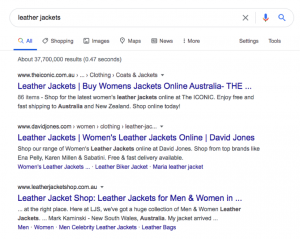Tracking your Google Ads competition
Share
Binh An Nguyen explores five reasons why marketers should track their Google Ads competition in order to streamline and improve their own advertising strategies.
Brands might be pivoting as they prepare for a post COVID-19 world, but Google Ads remains a key reason why so many online businesses are successful. It runs on a pay-per-click marketing model with a very simple premise: You create ads and run them so that your pages are more visible in the search results. This, in turn, means more sales.
The problem is that, while Google Ads can be a very lucrative way to make more money online, you’re up against some fierce competition and your business rivals are running ads, too. And they might be running them better than you.
To make sure you don’t lose out in the bidding war, join us as we take a look at some pertinent reasons you need to track your Google Ads competition.
You’ll know who your competition is
When you bid on keyword sets, you’ve got the chance to check out which domains are showing on them. This will tell you who your relevant rivals are in the Google Ads game, therefore making it easier to identify them – and then learn from them.
Perhaps more importantly, it will also draw your attention to whether or not you’re even bidding on the right keywords (if most of the domains who show on your ads aren’t relevant to your offering, you’re probably bidding on the wrong keywords).
Google Ads lets you pull up some key data that will highlight who (and what) you’re up against:
- Impression share – This is much more than a vanity metric. It’s how often a rival ad received an impression (as well as how often your ad showed up in search results).
As you can see from the images below, sometimes your ad might show up, and sometimes it might not. Sometimes, a competitor’s ad might show up instead. Check this metric to discover who your competitors are.
- Position above rate – This is how often a rival’s ad was shown more prominently than yours.
- Outranking share – This shows how often your ad ranked better than a rival’s ad.
Once you’ve got this data, you can use a tool like BrainLabs to visualise it all, before making it actionable.
You’ll find out what kind of rivals you’re up against
Knowing who your chief competitors are is one thing, but knowing exactly what they are in terms of (for example) their budgets is another. You can use Google Ads to separate the wheat from the chaff; in other words, find out who your real competitors are, and who barely scrape the surface so as to not be classed as a rival at all.
A good idea is to use Google Ads to look closely at who you’re competing with within the auctions so that you can figure out whether or not a rival domain is impacting negatively on your overall impression share. For example, you can use Google Ads to determine whether an affiliate or even a partner is actually negatively impacting your campaign. Then, you can work out a game plan that benefits both of you.
To do this, you can look at which keywords your competitors (and this can include affiliates) are bidding on. You can do this via your Google Ads account, but you can also use tools like SEMRush to help out.
You’ll find out where they’re competing with you
It’s going to cause you a major headache and lots of stress if you attempt to monitor every single ad positioning or impression share change across all your keywords. This is why, when it comes to figuring out where your competition is, it’s important that you simplify the process so that you know exactly where to focus your time.
For example, you could use a third-party bidding tool to track major changes on your highest-ranking terms. These are your ‘money makers’. If a competitor comes along and starts to push you out, the impact will be quick and easy to spot – and easy to correct.
You can also use Google Ad’s automated Search Impression Share reports to help you track your best performing campaigns, keywords and ad groups. When there are changes, you’ll be notified via email.
You’ll be able to reverse engineer what they’re doing
Understanding why our competitors are competing with us is just as important as knowing who they are. Once you’ve identified who they are, you can then take a look at their overall strategy and see whether or not there are things you can learn from it.
You can, for example, use a tool like SpyFu to ‘spy’ on your competitors’ ad copy. Doing so can highlight any holes in your own copy while drawing your attention to their historical ad copy trends. This allows you to learn more about their messaging and the kind of text they’re using in their calls to action. You’ll also be able to take a closer look at their landing pages and sales funnels, which in turn will allow you to stay fresh with high-converting funnels and landing pages.
Armed with this sort of information, you could rewrite your existing ad copy to do what your competitors are doing but better.
You’ll discover keywords you might have missed
At the heart of a good Google Ads campaign are keywords. SEMRush comes with a Keyword Gap tool that lets you find out what keywords your competitors are using or any terms they’re bidding on but you’re not.
If your rivals are outperforming you, you need to find out where and how, and then shift your focus.
Google Ads is a great way to improve your visibility in the SERPs. It boosts brand awareness, and – as long as you do it right – guarantees site visitors.
Sometimes, the competition is doing things better than we are, and it doesn’t hurt to keep tabs on them, learn from them, and improve what they’re doing. Make sure to use tools to identify who your rivals are, where they are and what they’re up to, before comparing their campaigns to your own, and making any necessary changes going forward.
Binh An Nguyen is the founder and CEO of Market Ease Digital.
Photo by Felix Mittermeier on Unsplash.

















